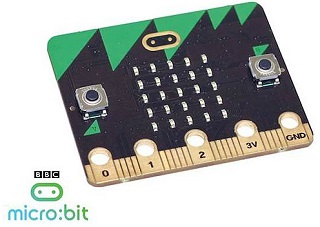 Always take a backup. Everyone knows that. There are plenty of articles on the web singing the virtues of the the new (Windows 7, 8 and 10) backup utility, and how easy it is to use. But none on how to actually restore your data when things go wrong. ‘sfunny that.
Always take a backup. Everyone knows that. There are plenty of articles on the web singing the virtues of the the new (Windows 7, 8 and 10) backup utility, and how easy it is to use. But none on how to actually restore your data when things go wrong. ‘sfunny that.
A week ago, when my Windows PC decided to scramble its hard disk I felt smug for having followed my long-standing advice. I’d taken an Image Backup of the entire system disk with the applications installed, data files were shadowed on a server (FreeBSD of course) and I had last month’s “User files” Windows backup to bring the system up-to-date (the odd Windows update notwithstanding). And even better, the system was still in a condition to boot albeit with a few warnings about corrupted DLLs, none of which were important.
Ha!
The first stage in any situation like this is to make an exact copy of the trashed drive in case things go horribly wrong. This involves mounting the disk on a working system and copying the drive as data. If you;re reading this because you are having problems, but don’t have the ability to image a drive, please find someone who can do this for you. The remainder of this diatribe assumes that you either know what you’re about, or at least have a safe copy of the disk you’re about to try and resurrect.
Only when the drive is imaged and safe is it okay to to try to boot the machine and run CHKDSK. No hardware faults were found in this case, but it fixed numerous errors in the directories and it was pretty obvious that nothing on the disk could be trusted. Windows had obviously gone ape and trashed the disk itself. so it was necessary to restore from a Backup Image to ensure the system was clean. And this is where my fun really started.
You have to reboot the PC into recovery mode (Windows RE). This is achieved by holding down a function key on boot and selecting the “Recovery” option from possible boot disks (details vary by manufacturer), or if you’re running Windows already you can find it under Advanced Options on System Restore – it will reboot to Windows RE mode for you. Then all you need to is select the image you want to restore, which in my case was on the network, so I entered the server details and login as requested. No dice.
Re image Your Computer
An internal error occurred. The following information
might help to resolve the error:
The network location cannot be reached. For information
about network troubleshooting, see Windows Help (0x0800704CF)
The restore utility must be wrong, and a quick Google search threw up some possible explanations. In my case it was nothing to do with the file permissions; it was on a FreeBSD cluster and I’m very confident I have control over the file permissions on that.
So what next? A Windows Image backup (since Windows 7) creates a .vhd file (Virtual Hard Disk). This is Microsoft’s half-arsed equivalent to being able to mount a file as an device and then using an FS on it. You can mount (Attach) a .vhd file from the “Mange Computer” console, using menu that pops up when you right-click on the “Disk Management” part of the tree on the left, which is not obvious. (Even less obvious: to detach it you need to right-click on the left-hand area representing the drive in the partition map on the right).
So, if Windows RE couldn’t read the image across the network I decided to use Windows itself to copy the files back manually by mounting the .vhd from the backup location. This isn’t that simple; you can’t copy the OS back while it’s running so you need to boot from somewhere else before you finish the job, but its better than a poke in the eye with a sharp stick.
Again, no dice.
“This image was created by a different version of Windows”
What? No way! It was created by this version of Windows; on this PC, no less.
This may have been because, for some bonkers reason, you can’t mount a backup .vhd as read-only, at least the first time its mounted on anything. It doesn’t tell you this, it just says that its an incompatible version. You must un-check the Read-Only box; and if you’re like me, you’ll make a backup of the backup before doing this. But it still didn’t work.
I tried again with the backup .vhd I’d made, largely because it had a much shorter name, and bingo! It mounted and all my files were visible. What’s going on? It wasn’t a permissions issue – of that I’m certain. The only explanation I’ve have is that the path name was too long before, with the Microsoft names being a UUID (GUID). Try shortening the name/path if you can’t mount a .vhd.
Armed with this knowledge that the .vhd really was good, I fiddled the file names and associated links and tried Windows RE image restore again, but with the same 0x800704CF error code as a result. A bit more digging, and it turns out this means that basically the system isn’t talking to the network card, probably because there is no driver. Microsoft’s solution is to install the driver with the disk that came with the card. But this Lenovo PC came with pre-installed Windows and NIC – Microsoft doesn’t supply Windows OEM on a disk any more, never mind a driver CD. One might assume, given that Windows RE happily asked me for network credentials as I supplied it with the network address of the image, that it had the network driver pre-installed. But that would be to sensible.
Rather than messing about looking for a suitable NIC driver and burning it to a CD, I just copied the “WindowsImageBackup” folder to the root of a USB-connected and disk and it restored just fine. Actually, it only worked after I moved the USB drive from its normally USB 3 slot to a USB 2 slot, because presumably Windows RE doesn’t have a driver for USB 3 hardware either. A pattern was emerging.
The image was restored; all my software was back. The only snag is that there were more than 200 Microsoft updates; taking another four hours to install. But at least I knot it’s now a clean install, and as a reward for my hard work I was able to put put of installing the Windows 10 “upgrade” nagware (KB2952664 and KB2976978 if you’re interested – it doesn’t identify itself as such).
So what have I learned from all of this? “Don’t Trust Microsoft”? Well I haven’t trusted a Microsoft backup solution since MS-DOS 2.1, and with good reason. But from now on I’ll always take the trouble to use dd image for imaging drives in future, even if that means taking them out of the PC to do it.




 Always take a backup. Everyone knows that. There are plenty of articles on the web singing the virtues of the the new (Windows 7, 8 and 10) backup utility, and how easy it is to use. But none on how to actually restore your data when things go wrong. ‘sfunny that.
Always take a backup. Everyone knows that. There are plenty of articles on the web singing the virtues of the the new (Windows 7, 8 and 10) backup utility, and how easy it is to use. But none on how to actually restore your data when things go wrong. ‘sfunny that.
 long last, the BBC micro:bit has
long last, the BBC micro:bit has